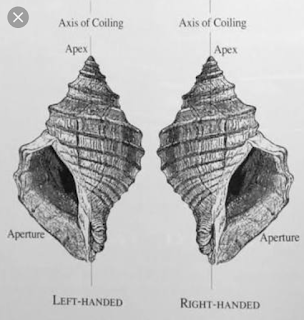Genetic code and RNA
Genetic code
Properties of genetic code
- It is triplet . The three nucleotides of mRNA which code for one amino acid represent codon. Complementary matching triplet of tRNA form the anticodon. The codon which initiates protein synthesis is called as initiation codon i.e.Methionine (AUG) and valine (GUG). Some of codon do not code for any amino acid, such codon are known as non-sense codon i.e. UGA(Opal),UAA(Ochre) and UAG (amber) . They signal termination of polypeptide chain hence also called as termination or stop codons. Hence out of 64 codons 61 code for amino acids.
- The code is degenerate. For a particular amino acids more than one codon can be used. One amino acid often has more than one code triplet e.g. Phenylalanine has two codon i.e. UUU and UUC. Arginin, similarly has six codon.
- The genetic code is universal. Given codon in DNA and mRNA specifies same amino acid in all organism like prokaryate, Eukaryotes, and even viruses.
- The code is non -overlapping. It means that same letter cannot be used for two different codons.
- The codon is comma less. There is no punctuation between any of codon triplets.
- The code is non -ambiguous. A single code will code for specific amino acid. Exception GGA, is an ambiguous code, it codes for glycine as well as glutamic acid.
- They have property of Co -linearity.
- Gene-polypeptide parity :- A specific DNA segments will transcribe a specific mRNA chain which will form a specific polypeptide chain thus representing a gene-polypeptide parity.
Ribonucleic Acid (RNA)
RNA is polymer of ribonucleotides which are made up of pentose Ribose sugar,phosphoric acid and nitrogenous bases*.
*Nitrigenous bases: adenine (A), guanine (G), cytosine (C), uracil (U).
RNA usually occurs in nature as long unbranched polymeric molecule made up of single chain. Single stranded RNA can form a double helix only when different parts of a chain have antiparallel complementary segments which bend back upon themselves.
Bonding in RNA
The Nitrigenous bases are joined to Ribose sugar byN-C glycosidic bond.
For purines the glycosidic bond links the C1 position of Ribose pentose sugar and N9 position of bases.
For Pyrimidines C1 position of sugar links the N3 position of base.
Ribose sugar forms the backbone along with phosphoric acid for attachment of Nitrigenous bases.
Types of RNA
On the basis of molecular size and function three types of RNA have been recognized :
1. Messenger RNA(mRNA) 2. Transfer RNA (tRNA) 3. Ribosomal RNA (rRNA)
- Messenger RNA : It is formed on specific patted of DNA called structural genes as a complementary copy of one strand of it. It contains and carries instruction coded in DNA to the cytoplasm and finally becomes attached to ribosomes. Normally it carries the codon of single complete protein molecule hence called monocistronic m-RNA. Sometimes, it contains several adjacent DNA cistrons hence called polycistronic m-RNA.
- Transfer RNA (tRNA) : also known as soluble RNA or supernatant RNA or adapter RNA. It is single stranded and takes the shape of clover leaf.
- Ribosomal RNA : it plays structural and catalytic function in translation.





👍👍👍👍
ReplyDeleteKeep it uppp 👏
ReplyDeleteThnku dear
ReplyDelete